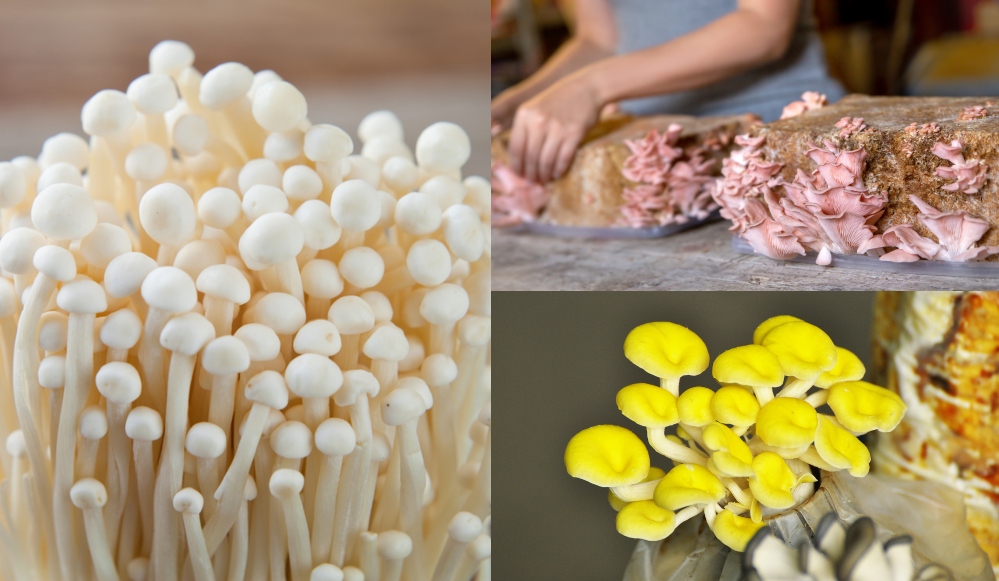
Mushroom growing – or fungiculture – is a fun, fascinating, and rewarding hobby that offers an altogether different experience from cultivating green plants.
Successfully rearing mushrooms requires three basic things: high humidity, good moisture, and a growing medium that is rich in organic matter.
Mushrooms can grow on many different substrates, including wood logs, sawdust, wood chips, compost, straw, and more.
Mushroom kits are an easy way to get acquainted with the world of fungiculture. They include everything you need to get started growing your own delicious and nutritious mushrooms at home.
The Lifecycle of a Mushroom
As members of the kingdom Fungi, mushrooms play a vital role in the ecosystem.
Unlike plants that derive energy from sunlight, mushrooms obtain all energy and growth from the decomposition process. They are among the most efficient organisms for nutrient recycling, converting complex carbohydrates into simple carbohydrates that can then be used by plants.
The life of a typical forest mushroom begins with the mycelium – a colony of branching, web like fibers that spread underground in search of a suitable environment above.
When a good source of water and organic materials are found, a tiny pinhead will emerge. This fruiting body will eventually develop into a rounded egg shape, covered with a layer of mycelium, known as the universal veil. As the mushroom grows and expands, it breaks free and unveils a thick stalk and rounded cap with gills underneath.
As the mushroom reaches maturity, it will release millions of spores that are carried with the wind to form a new mycelium.
Although mushrooms themselves have a relatively short life span, the mycelium can grow to be massive and incredibly long lived. The “humongous fungus” of Oregon, for example, is possibly the largest living organism by area, with a mycelium that covers 2,400 acres, weighs as much as 35,000 tons, and is estimated to be over 2,000 years old.
10 Best Mushroom Growing Kits
Choose among complete kits that can be grown indoors, year round, or outdoor kits that can be cultivated in the dark and damp areas of the garden.
1. White Button, Crimini, and Portobello (Agaricus bisprous)
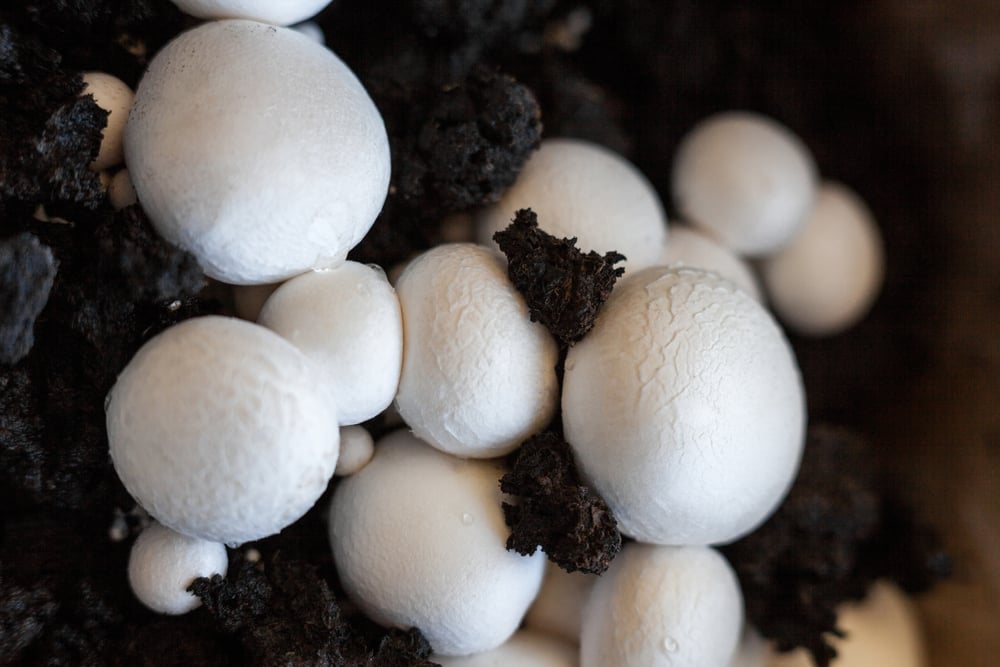
A. bisporus is a versatile mushroom that can be enjoyed three ways: harvest when white and immature for white button mushrooms, pick it when it is brown for crimini mushrooms, or wait until it reaches maturity and opens up its cap for portobello mushrooms.
This kit will yield up to 4 pounds of mushrooms over a 4 to 6 week growing period and includes the growing box, the substrate colonized with mycelium, a casing layer, and detailed care instructions.
Purchase this kit by Willow Mountain Mushrooms here.
2. Pearl Oyster (Pleurotus ostreatus) or Pink Oyster (Pleurotus Djamor)
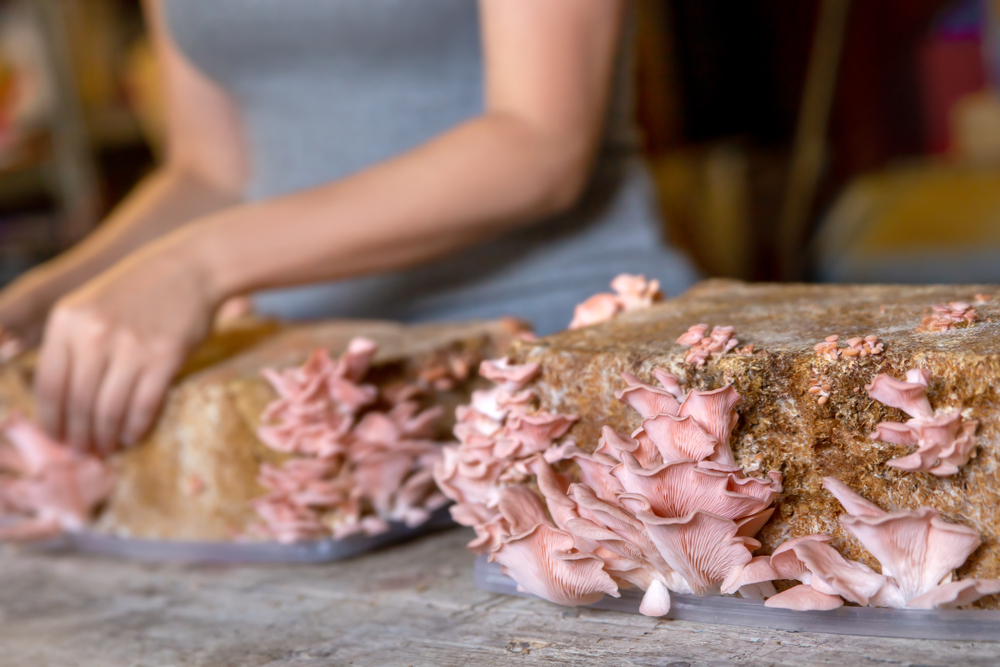
Mild in flavor with a velvety texture, pearl oyster mushrooms are so named because their thin and flattened caps resemble molluscs.
This kit in a box includes everything you need to get growing pearl oysters. Simply soak the growing substrate overnight, return it to the box, and spritz with water twice a day for one week. Place the mushroom box in a warm spot with indirect light and you should have your first harvest within 10 days.
Once the kit has exhausted itself, try crumbling up the growing medium to inoculate pasteurized straw or hardwood pellets to get even more harvests.
Purchase this kit by Back to the Roots here.
Back to the Roots also offer a pink oyster mushroom growing kit which is available here.
3. Shiitake (Lentinula edodes)
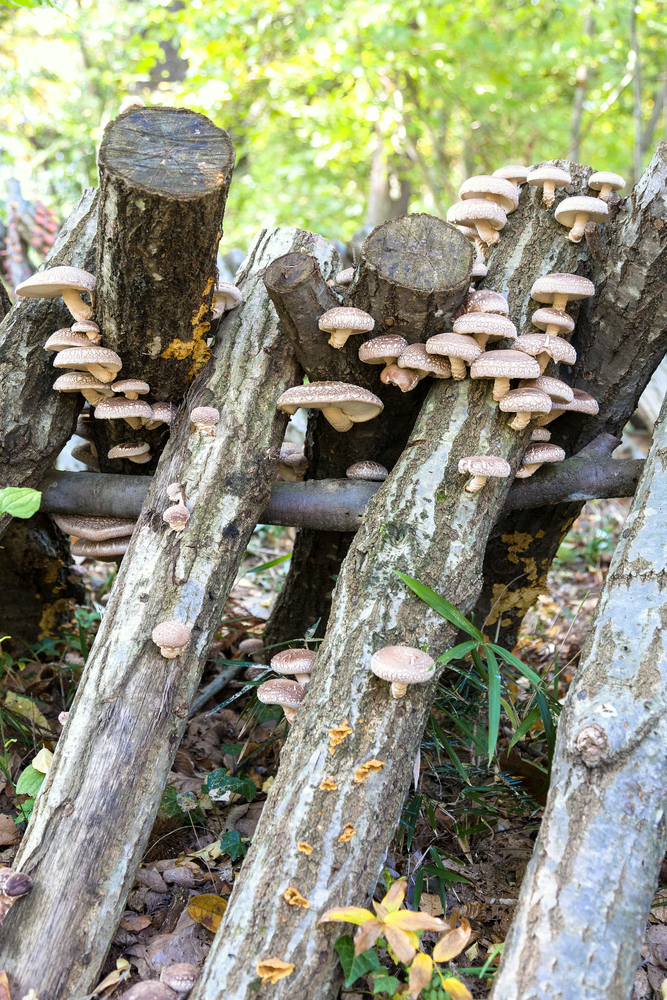
Shiitake mushrooms grown on hardwood logs can provide multiple harvests over many years.
To get that smoky, earthy, meaty flavor at home, this kit includes two 6 to 9 inch logs inoculated with shiitake mushroom spawn.
Once you’ve received your logs, submerge them in non-chlorinated water for 24 hours, pat dry with a towel, and set them in a warm, dark spot indoors or a shady location within your garden.
Shiitake mushrooms are ready to harvest 5 to 10 days after the first pinheads emerge from the log.
When you’re ready to take it to the next level, try inoculating the logs yourself!
Purchase this kit by 2FunGuys here.
4. Lion’s Mane (Hericium erinaceus)
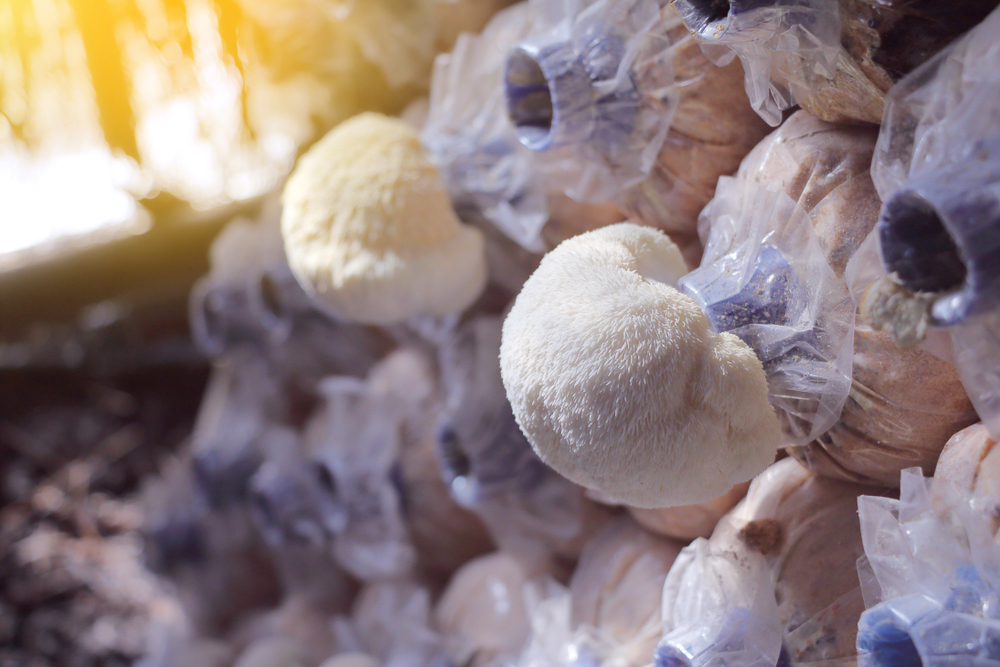
The aptly named lion’s mane mushroom can be found in hardwood forests, nestled into the crevices of trees. It has a very distinctive look, growing in clumps of soft dangling spines that start out white but turn a slightly yellow or brown hue when mature.
Lion’s mane has a texture similar to crab with a subtle seafood taste.
This kit makes it easy to grow lion’s mane mushrooms indoors. Included is a 5 pound grow bag filled with woody substrate that will produce up to 4 pounds of mushrooms over a two month period with 3 to 4 harvests (or “flushes” in fungiculture parlance).
Purchase this kit by Michigan Mushroom Company here.
5. Wine Cap (Stropharia rugosoannulata)
Also known as ‘garden giant’, wine cap mushrooms can reach a size of 7 inches tall with a cap diameter of nearly 1 foot across!
Tasting of red wine with a hint of potato, they are best eaten when young and tender but larger specimens are delicious roasted, grilled, and sautéed.
This outdoor growing kit includes 4 pounds of substrate inoculated with wine cap spawn. When you receive your kit, mix the contents with a wheelbarrow of straw, wood chips, compost, leaves, or grass clippings. Spread this blend near trees.
Wine cap mushrooms will fruit from spring though to autumn, and this garden starter will provide for up to 3 years. Keep adding organic mulch each year and you’ll have infinite harvests.
Purchase this kit by Cascadia Mushrooms here.
6. Reishi (Ganoderma lucidum)
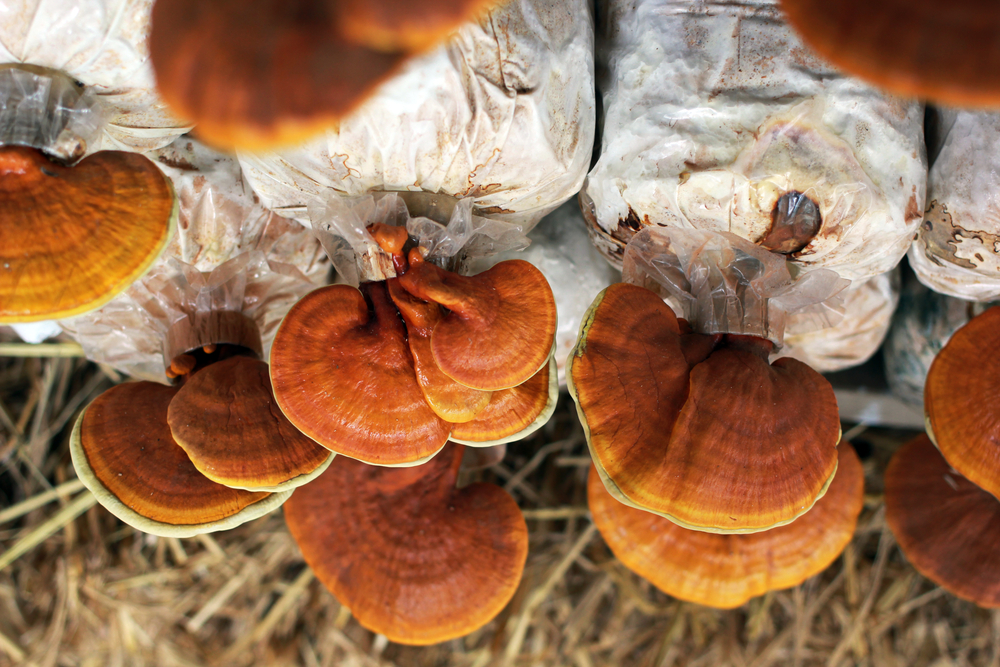
Used for over 2,000 years in traditional Chinese medicine, reishi is known as the mushroom of immortality because of its purported anti-aging and immune boosting powers.
Though reishi is bitter in taste, it is typically used to make tea and tinctures.
It is an attractive and unusual mushroom, developing reddish, twisted “antlers” with golden tips that eventually open into flat, kidney-shaped caps.
This tabletop grow bag kit springs to life when brought to room temperature. Place it in a spot that is warm and bright and occasionally mist with water to prevent them from drying out.
Purchase this kit by Gallboys Mushroom Kits here.
7. Enoki (Flammulina velutipes)
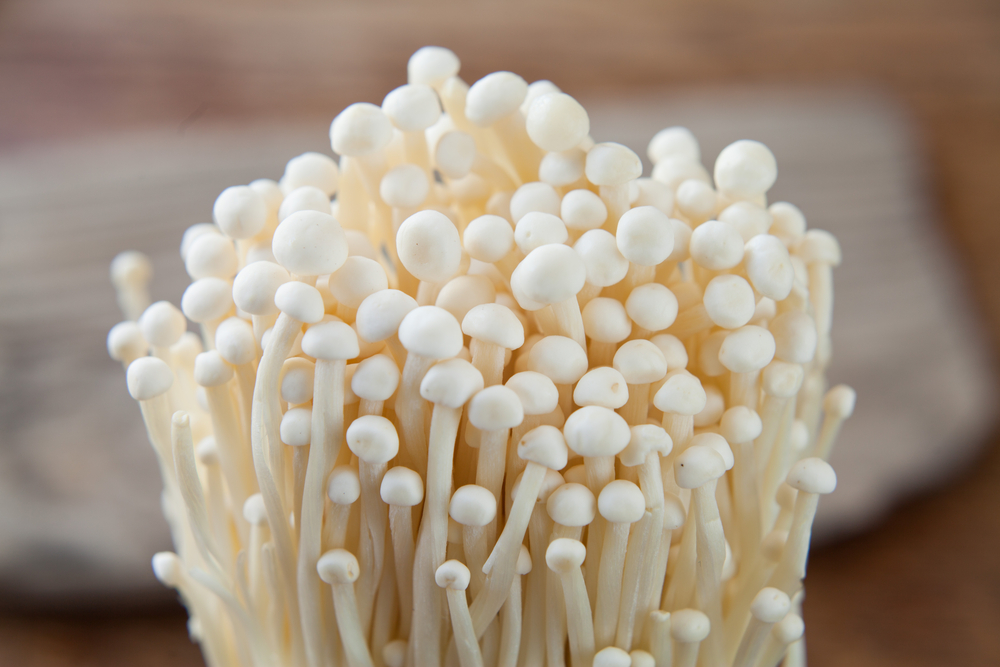
Enoki are long and slender mushrooms, creamy white in color, with tiny caps. They are mild tasting and have a slight crunch, perfect for soups, salads, and stir fries.
Because enoki is a cold loving mushroom, preferring temperatures between 35°F and 55°F, the kit can be placed in a cooler spot such as a garage or basement. If you don’t have a cold room, these will grow in the refrigerator as well.
This kit can yield up to two pounds of fresh mushrooms within 2-3 months.
Purchase this kit by Mojo Pro-Gro here.
8. White Morel (Morchella americana)
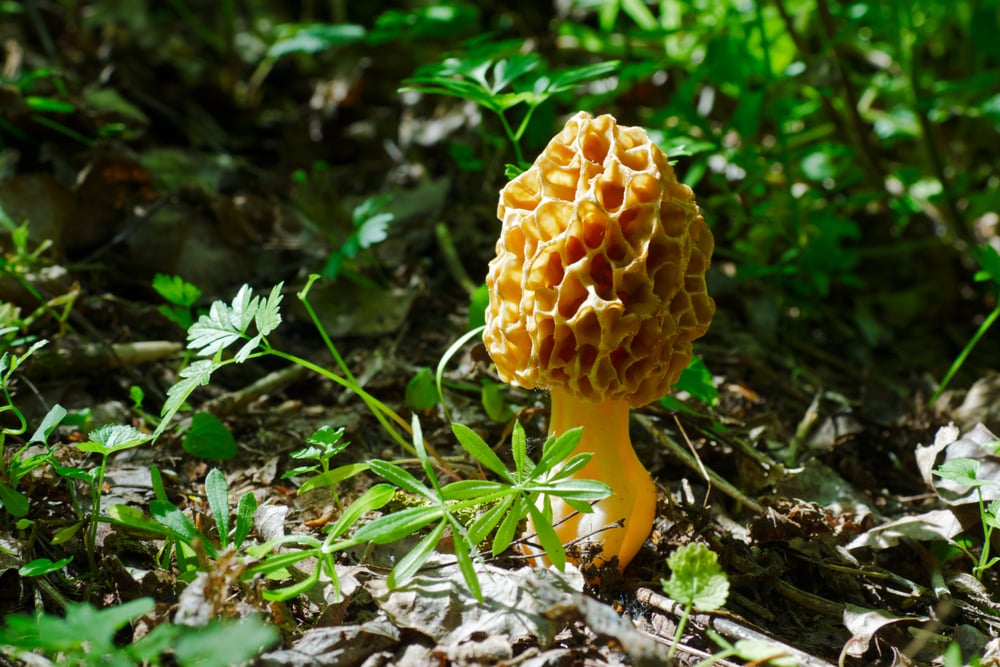
Morel mushrooms are a true gourmet delicacy, hollow on the inside with white stems and an oblong honeycomb patterned cap. It tastes earthy and nutty, with a meaty texture.
They are notoriously difficult to cultivate commercially and are quite pricey since they are often foraged from the wild.
This outdoor grow kit makes it easy to cultivate your own morel patch in your backyard. Choose a shady spot, ideally next to a hardwood tree, and mix the spawn substrate with leaf mold or finished compost between the months of May and January.
While it can take up to two years for the morel garden to become established and provide mushrooms, once it sends up fruiting bodies it will continue to do so for many years. Keep it productive by adding fresh organic materials twice per year.
Purchase this kit by Gourmet Mushroom Products here.
9. Almond (Agaricus subrufescens)
As part of the Agaricus genus, almond mushrooms are closely related to white button/portobello and have a similar appearance. They are very distinguishable from their brethren, however, due to their nutty fragrance and subtly sweet flavor.
Easy to grow indoors and out, this sawdust spawn kit needs to be mixed with finished compost and spread in a warm and humid site. Water regularly and you’ll see little buttons popping up in just 4 weeks.
Purchase this kit by Field & Forest here.
10. Comb Tooth (Hericium americanum)
Comb tooth mushrooms are another easy to grow fungi, typically found in forests taking root in and around living or dead hardwood trees.
A close relative of lion’s mane, comb tooth mushrooms emerge as creamy white irregular clumps that look like cauliflower heads. As they mature, they produce long, hanging, and branching spines that are soft and chewy, tasting like shellfish.
The tabletop kit requires a warm spot in indirect sunlight and high levels of humidity. Use the provided humidity tent and spritz with water daily and you’ll see your first harvest 12 to 18 days after opening the grow bag. The average number of harvests for this kit is between 3 to 6 flushes.
Purchase this kit by Field & Forest here.
Growing mushrooms at home is an exciting, educational and rewarding experience that can be enjoyed by the whole family.
A mushroom growing kit is the easiest and most efficient way to get started and, as shown above, you can grow a wide variety of mushrooms. These kits also make great gifts.
If you already grow your own vegetables, fruits and herbs, then why not try supplementing your homegrown produce with mushrooms, too?

Get the famous Rural Sprout newsletter delivered to your inbox.
Join the 50,000+ gardeners who get timely gardening tutorials, tips and tasks delivered direct to their inbox.


